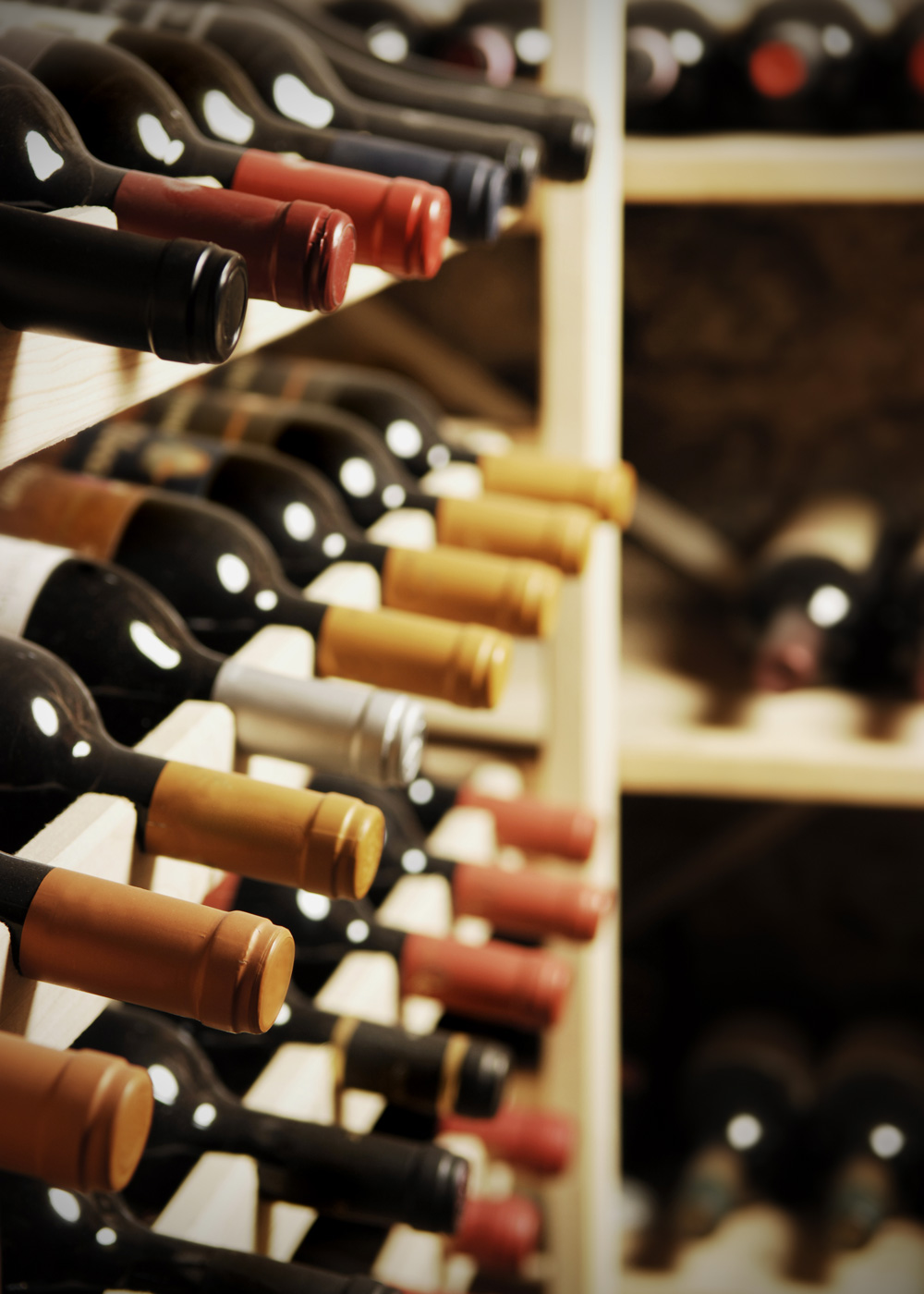After buying a bottle of wine have you ever wondered ‘should I drink this now, or let it age?’.
Aging wine is one of the more exciting aspects of the beverage. Unlike whisky, brandy, and other expensive drinks, wine is “alive” – it breathes and changes over time. Many wines can mature and improve with cellar aging over ten or more years. The aromas and flavors that come from these older bottles offer a different type of complexity than most youthful wines. However, not everyone prefers to trade some of the primary (fresh fruits, flowers) and secondary characteristics (spices, oak) for the more perceivable tertiary ones (vegetables, mushrooms, straw, tobacco, smoke, honey) that can be common in mature wines. Not all wines are made with aging in mind. Many producers choose to focus on styles of wine that will be enjoyable as soon as they are released and that won’t necessarily improve in the bottle. In fact the majority of wines sold in the current American market fall into the later category.
Qualities in Wine That May Indicate the Potential for Further Aging
Some wines have certain qualities which may make them good candidates for extended aging. High levels of tannin in red wines are an important structural element, and will help to preserve them over time. Other components should be in balance as well, like sugar, acidity, and alcohol. If the wine is particularly unbalanced, it will remain this way even after a long period of aging. Mature aromas and flavors found in young wines such as leather, tobacco, smoke, mushrooms, and honey usually indicate their potential to develop additional complexity. Since white wines lack tannin, acidity plays a more crucial role in their long-term development, but only if they possess depth, or layers of flavor and aroma in their youth. Vintage Champagne is one of the few sparkling wines capable of additional aging after release. Fortified wines like Port, Sherry, or Madeira may be suitable to mature, and the greatest examples can last for over a century!

Price in Relation to Aging Potential
The general rule of thumb is that inexpensive wines should be consumed young, while expensive wines drink best after some cellaring, though there are always exceptions. For instance, Non-Vintage Champagne usually has a high price when released, yet rarely benefits from more time in the bottle.
Popular Wines to Age
The following list can be used as a guideline for which types of wine to age:
Grand Cru Classé Bordeaux – Classified Bordeaux from both the right and left banks are a favored type of red wine to age.
Premium Cabernet Sauvignon – Full-bodied, bold New World Cabernets from California, Washington State, Chile, and Australia can have plenty of attractive fruit, tannin, and alcohol to help them develop positively for years.
Piedmontese Nebbiolo – Wines like Barolo, Barbaresco, and Gattinara are usually quite tannic when young, so additional bottle age can soften their edges.
Tuscan Reds – Sangiovese-based wines like Brunello di Montalcino and Chianti Classico Riserva may benefit from some bottle age. ‘Super Tuscans’ based on Cabernet Sauvignon and Merlot may also mature well.
Amarone della Valpolicella – The best are powerful, yet velvety red wines, capable of developing further complexity over time.
Grand Cru Red Burgundy – Pinot Noir can be quite unpredictable with age, but Burgundy’s Grand Cru bottlings are usually reliable.
Northern Rhône Reds – Some wines from the appellations of Côte Rôtie and Hermitage can last for decades in the cellar.
Southern Rhône – The most desirable wines from Châteauneuf-du-Pape can evolve for many years.
Spanish Reds – The finest Reserva and Gran Reserva wines from Rioja and Ribera del Duero will hold up for decades.
Vintage Port – Only produced in the very best years, these fortified wines are built for extensive cellaring.
Vintage Champagne – These prestigious luxury cuvées can age for a while, though there’s really no wrong time to pop open a bottle of amazing bubbly!
Grand Cru Classé Sauternes – The top producers make a lusciously sweet, golden nectar that can evolve gracefully over decades.
Grand Cru White Burgundy – Chardonnay from the best vines in Burgundy can take some time to mature.
Chenin Blanc – High acidity levels can allow these Loire Valley wines (fermented to varying degrees of sweetness) to age as long as any white in the world.
Riesling – This high acid white wine may come in a range of styles from dry to off-dry to richly sweet. The best versions can improve over decades, often developing a classic petrol aroma.
Tokaji Aszú – The finest examples of this sweetly concentrated Hungarian wine are valued for both their rarity and age-worthiness.
Cellaring Wine
If you’d like to age wine for long periods of time, the dark, cool, and humid conditions found in a wine cellar are ideal. Make sure to lay wine bottles on their side so the corks don’t dry out. If you don’t have a cellar, temperature-controlled wine refrigerators can act as a suitable alternative. For further tips on storing wine at home, check out our blog: How To Successfully Store Wine.



